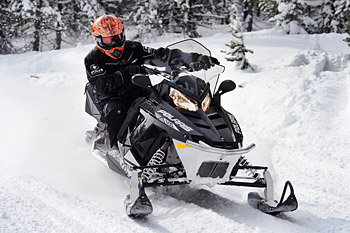It was less than ten years ago the snowmobile industry was concerned about new people having the inclination to get into the sport.
The feeling was that because sleds required some unique aptitudes to ride and enjoy, only a very small percentage of the populace would be interested in getting involved. The accusation was that market growth was limited by the machines themselves.
It was really true, actually. Back then many sleds were carbureted and required a special ritual of using a tricky enrichener or choke to get them fired and then they burbled and stuttered until they were warmed up, belching smoke all the way.
EFI has completely cleared up this problem and made starting, warm-up and idling a mostly smoke-free no-brainer.
Suspension compliance has really been stepped up and with rider forward ergonomics putting less stress on riders’ backs, the days of hammering along trails until you were so exhausted you just wanted to get home, are over.
Same with handling. The OEMs have placed a tremendous amount of focus on keeping the steering feel as light as possible so beginners don’t have to feel like they need to be bench-pressing school buses to turn the bars.
Yamaha’s power steering is an ideal fix that has a lot of appeal to the novice rider.
Last, sleds are much warmer and more comfortable than they used to be. Air management around the rider, both warm air from under the hood and the air passing along the outside of the sled and around the riding compartment allows for warm feet, hands and no rapid drops in core temperatures when the thermometer drops.
Seat heaters, warm windshields and thumb and handwarmers have been perfected to make the riding experience way better.
Today, you can invite the most city-fied person to take a first ride on a sled and be sure they will be comfortable and not offended by the experience. Pretty good progress.








